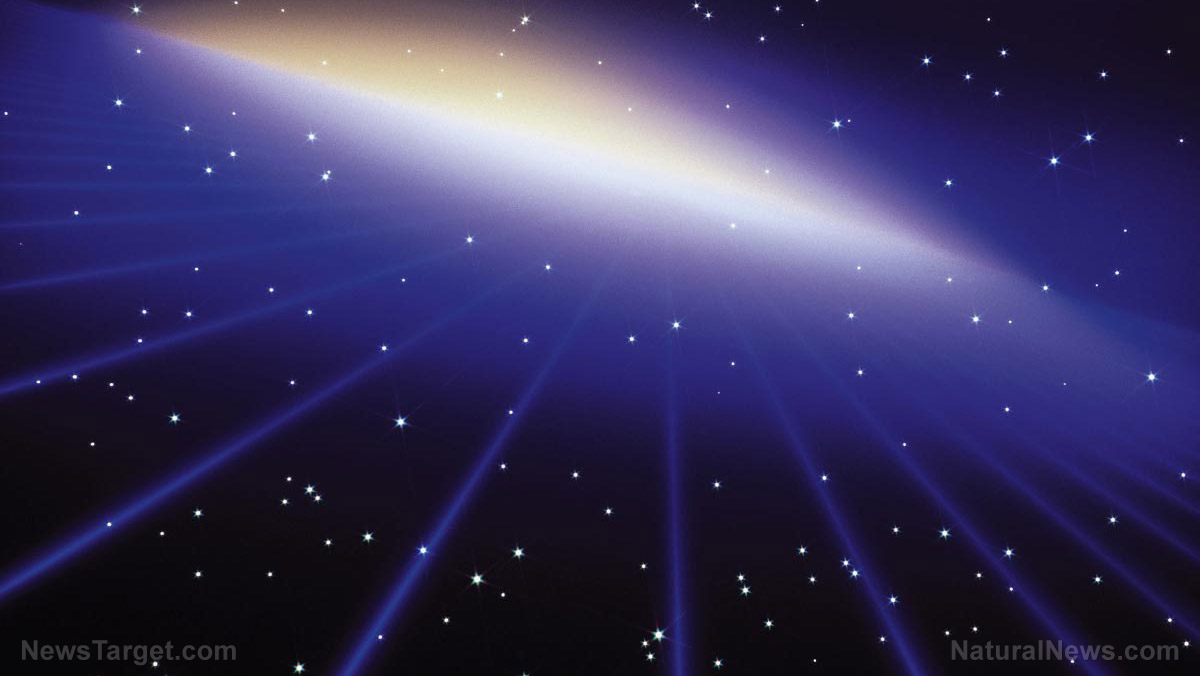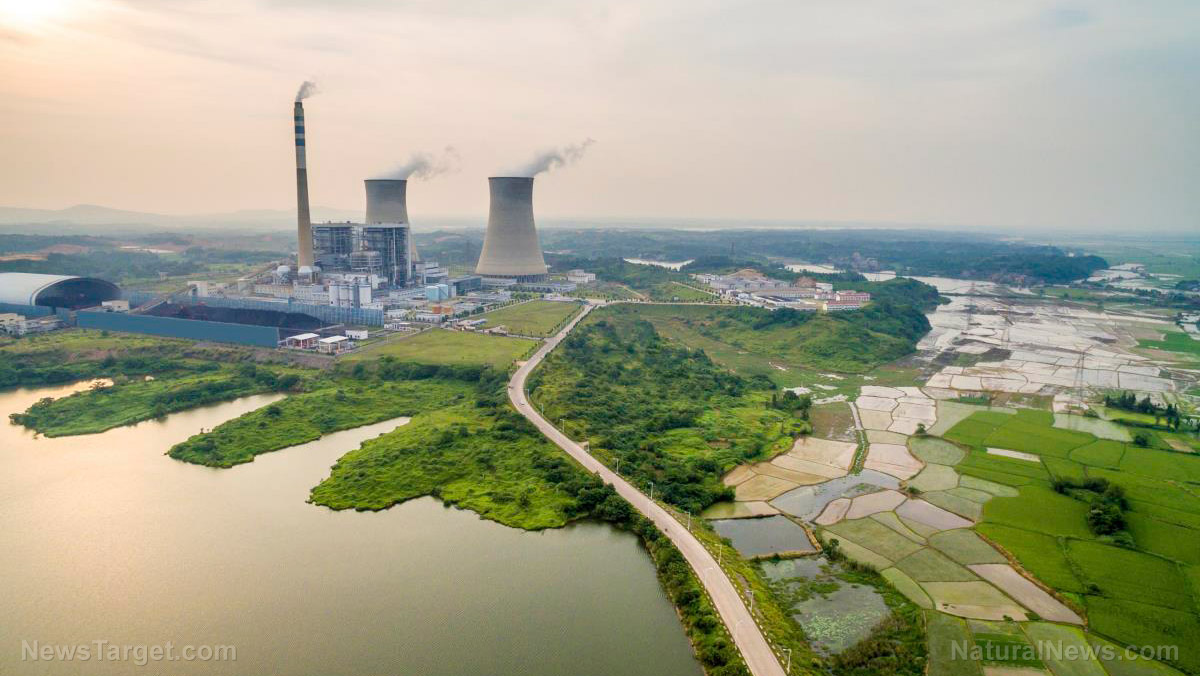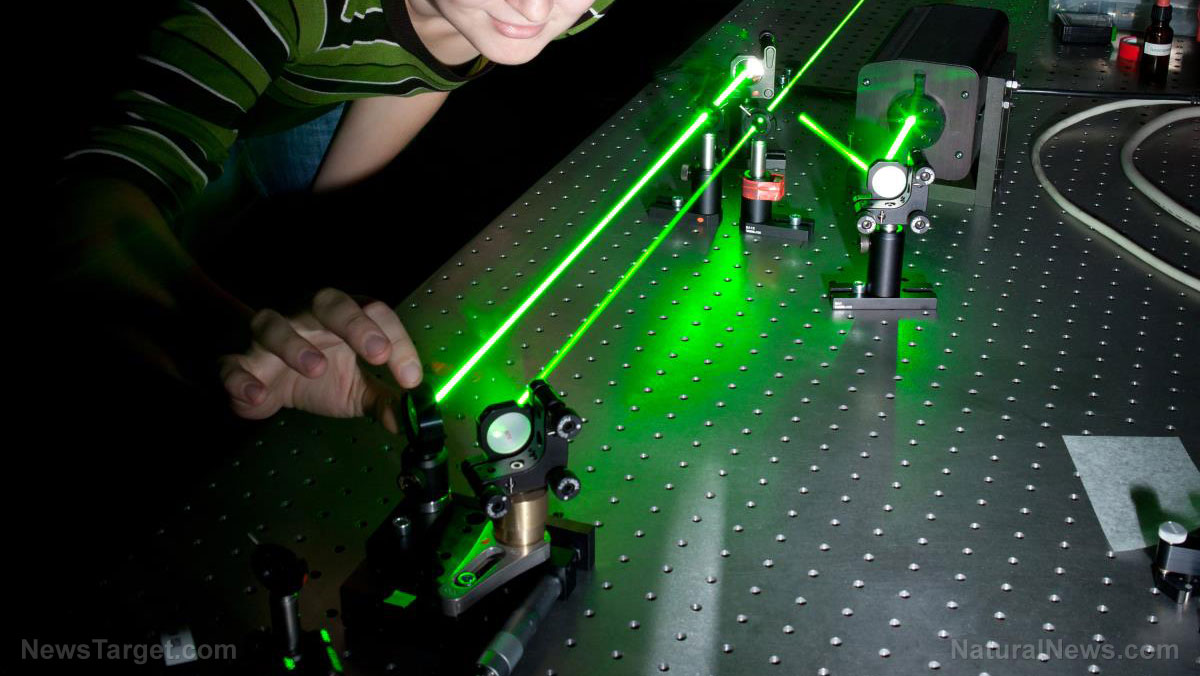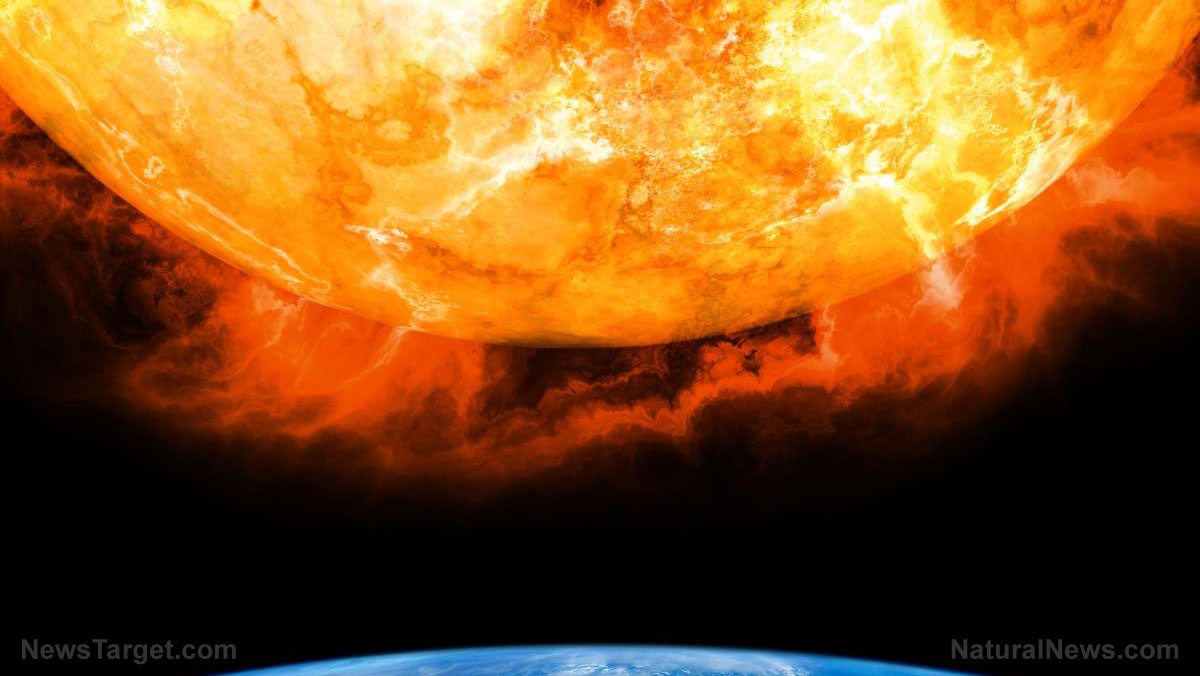Super-sized space bubbles in another galaxy are spewing cosmic rays in our direction
10/07/2019 / By Edsel Cook

You have probably seen a child huffing and puffing and blowing at a bubble blower toy to fill the air with glistening soap bubbles. Researchers identified a galaxy in the universe that is going through a similar phase in its life — except its space bubbles are shooting cosmic rays in the general direction of Earth.
The NGC 3079 galaxy lies 67 million light-years from the sun. It produced two huge bubbles of gas that span several thousand light-years in diameter.
Both formations gave off tremendous amounts of highly charged particles that streaked across the vast void as cosmic rays. Their particles displayed 100 times more energy than any counterpart on Earth, including the ones created and studied at the Large Hadron Collider in Switzerland.
A NASA-led international team of researchers from the United States, Canada, France, and Germany made this discovery. They went over imagery sent by the Hubble Space Telescope and the Chandra X-ray Observatory — two of the four “Great Observatories” launched by NASA from 1990 to 2003.
They spotted the two cosmic bubbles bobbing near the center of NGC 3079. The researchers released their findings in The Astrophysical Journal. (Related: Sci-fi in real life: Scientists propose building a space station INSIDE an asteroid and using its gravity to mine valuable space rocks.)
A distant galaxy formed two big superbubbles
While researchers have spotted similar bubbles in the past, the vast bulk of the two cosmic formations in NGC 3079 earned them the classification of “superbubbles.”
The bulkier member of the pair sported a diameter of 4,900 light-years. Meanwhile, its partner measured around 73 percent of its size (3,600 light-years).
To give an idea of how big these superbubbles are, the orbit of Neptune around the sun measures a diameter of 5.6 billion miles (nine billion kilometers). Multiply that by one thousand, and you get a light-year, 5.6 trillion miles (nine trillion kilometers.)
Now, note that both NGC 3079 superbubbles have diameters that span thousands of light-years. The bigger superbubble measures more than 27.4 quadrillion miles (50.4 quadrillion kilometers).
These and other superbubbles throughout the universe are made up of stellar gas that originated in stars in their home galaxy. While a star releases gas regularly, it may experience a tremendously strong shock wave or multiple such events. The shock waves hurl its material so far into space that the expelled gas forms a bubble-shaped structure.
The secret origin of NGC 3079’s superbubbles
The NASA researchers might know about the process that formed cosmic bubbles, but they remained mystified regarding the particular event that produced the shock waves responsible for creating NGC 3079’s superbubbles.
One theory involves newly formed stars. A lot of energy goes into the birth of a star. The process produces “stellar winds” similar to solar wind, but arguably much stronger.
These stellar winds may possess the force to cast stellar gas into the far reaches of space. And there are a lot of stars being born.
Another theory attributes superbubbles to the activity of supermassive black holes. Often found in the hearts of galaxies, the titanic space-time distortions devour anything that passes their event horizon.
Whenever a black hole consumes matter, it releases immense amounts of energy. The radiation from the supermassive examples has enough energy to form superbubbles.
Like most galaxies, NGC 3079 hosts a supermassive black hole in its center. And this black hole so happens to sit in between the superbubbles, lending credence to this theory.
Whatever their origin, the superbubbles appear to act as natural particle accelerators of immense power. The interactions within the gas-filled cavity may impart tremendous amounts of energy on cosmic particles. They may be a source of the cosmic rays that make space travel so risky.
Sources include:
Tagged Under: cosmic, cosmic events, cosmic rays, discoveries, Galaxies, NASA, NGC 3079 galaxy, outer space, space research, Stars, superbubbles, supermassive black holes
RECENT NEWS & ARTICLES
Physics.News is a fact-based public education website published by Physics News Features, LLC.
All content copyright © 2018 by Physics News Features, LLC.
Contact Us with Tips or Corrections
All trademarks, registered trademarks and servicemarks mentioned on this site are the property of their respective owners.


















